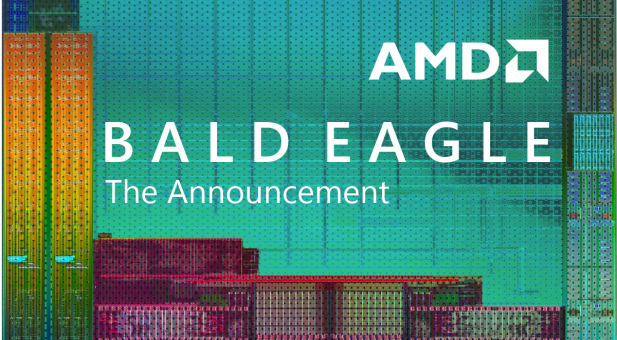Today AMD is announcing the 2nd generation of its R-Series of APUs and CPUs which were previously codenamed Bald Eagle. AMD’s R-series is aimed at embedded applications like medical imaging, digital signage, and industrial automation. This latest generation of R-Series chips offer frequencies between 2.2 and 3.6 Ghz and are based on AMD’s 28nm Kaveri APU. They support HSA, ECC, DDR3-2133, configurable TDP, and have a guaranteed ten-year period of availability. They are also offered in 17 and 35 Watt power envelopes to meet your every embedded need.
The first generation of R-series products was based on a variant of AMD’s 32nm Richland APU and offered versions with and without that APU’s graphics portion enabled. Clock speeds ranged from 3.2 to 1.6 Ghz in dual and quad-core configurations and the whole platform ran on AMD’s A70M and A75 chipsets. While not mind-blowing these parts enjoyed a decent reception from the embedded market.
Interestingly AMD says that when paired with an Embedded Radeon E8860 GPU these R-Series chips can support nine independent 4k displays. They are also claiming that these new Bald Eagle chips offer up to 66 percent greater compute performance than the current R-Series chips thanks to HSA.
AMD’s offered products for the embedded market in one form or another since it acquired the Geode line of CPUs back in 2003. Although it wasn’t until the launch of AMD’s G-Series of APUs in 2011 that AMD really became serious about courting the embedded market. Since then we’ve seen a consistent stream of new SKUs from AMD and a growing number of offerings from AMD’s partners in the embedded space.
The R-series itself it a bit of a niche line of embedded chip because of the relatively high TDPs and performance profiles of these chips. Most embedded applications can barely utilize the performance of AMD’s Kabini-based G-series of embedded chips let alone the compute power contained in the Kaveri-based R-series. But for those applications that can use the performance of the R-series and are okay with the thermal profile then these second generation chips look like a solid update.S|A
Thomas Ryan
Latest posts by Thomas Ryan (see all)
- Intel’s Core i7-8700K: A Review - Oct 5, 2017
- Raijintek’s Thetis Window: A Case Review - Sep 28, 2017
- Intel’s Core i9-7980XE: A Review - Sep 25, 2017
- AMD’s Ryzen Pro and Ryzen Threadripper 1900X Come to Market - Aug 31, 2017
- Intel’s Core i9-7900X: A Review - Aug 24, 2017

